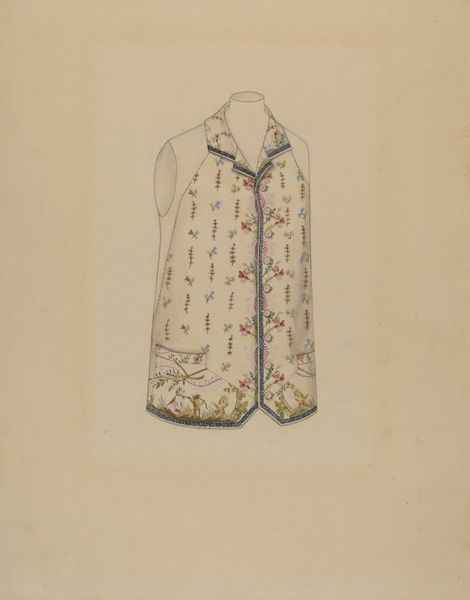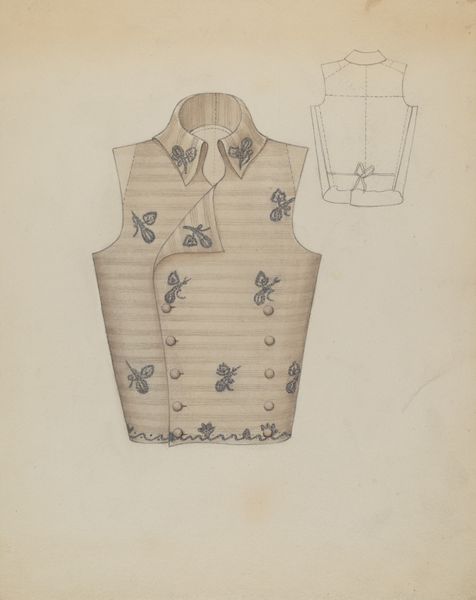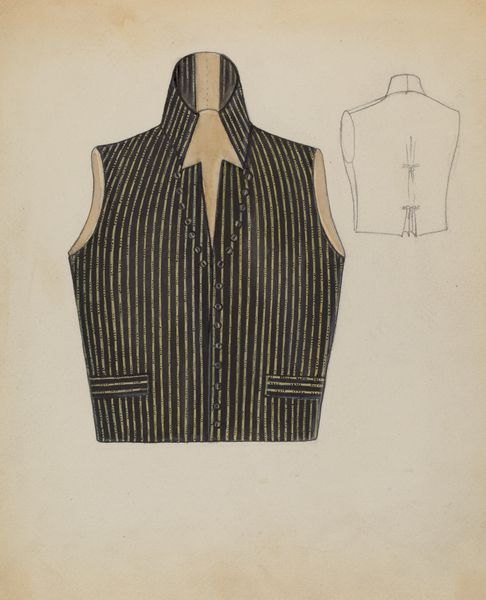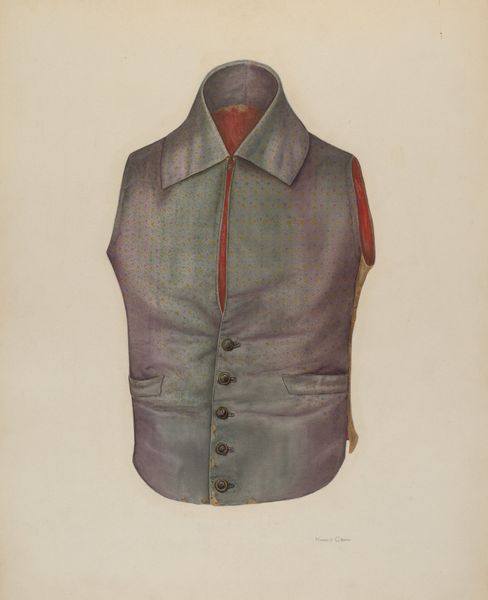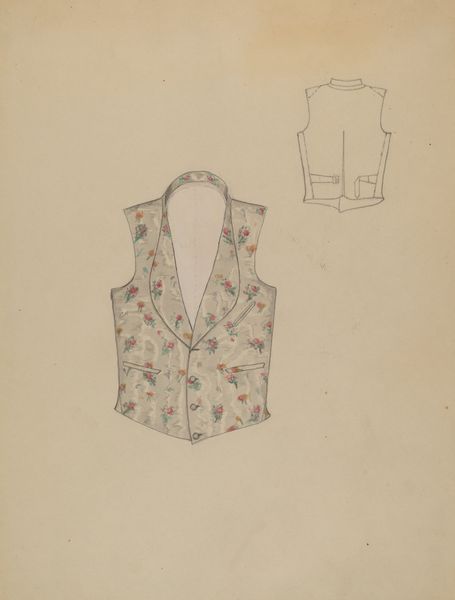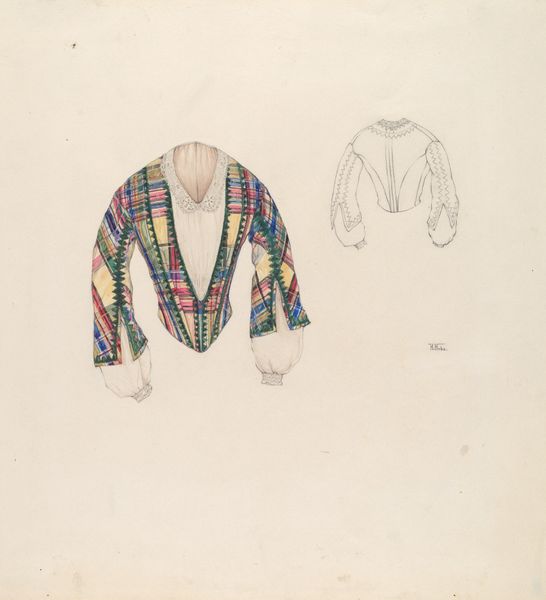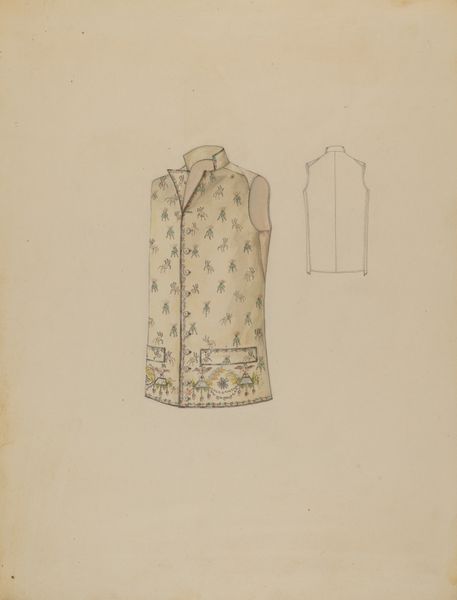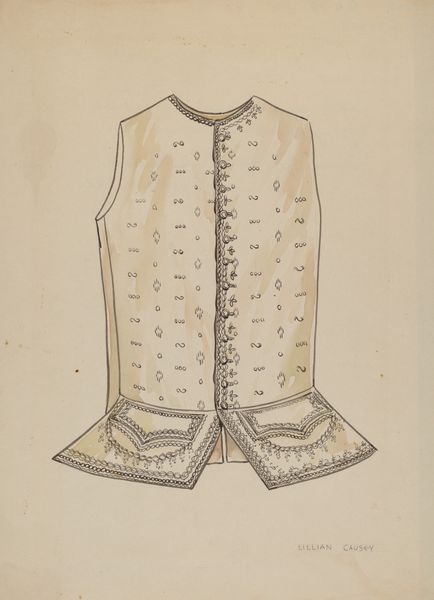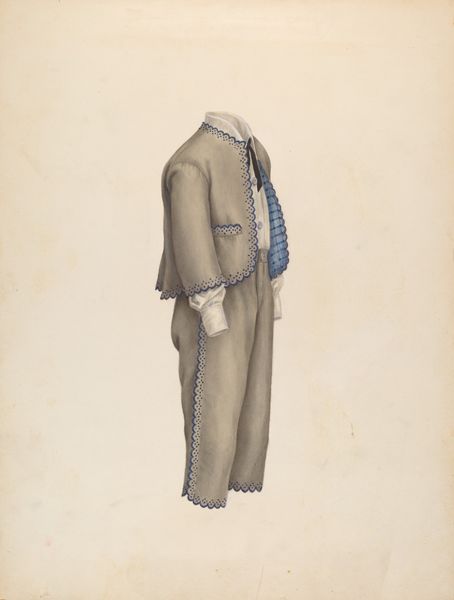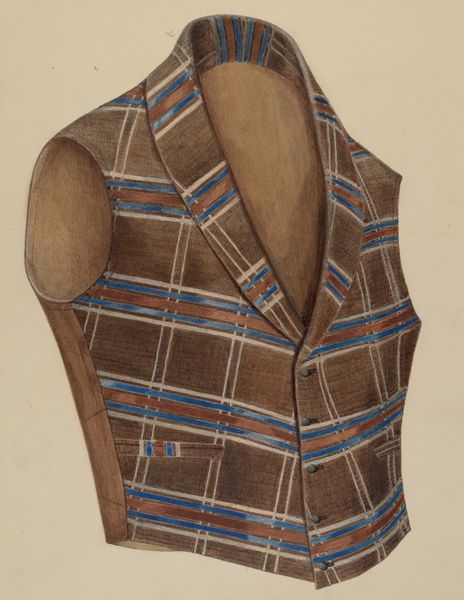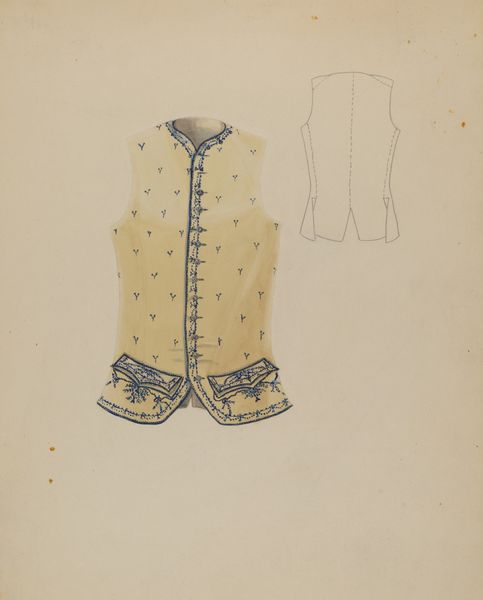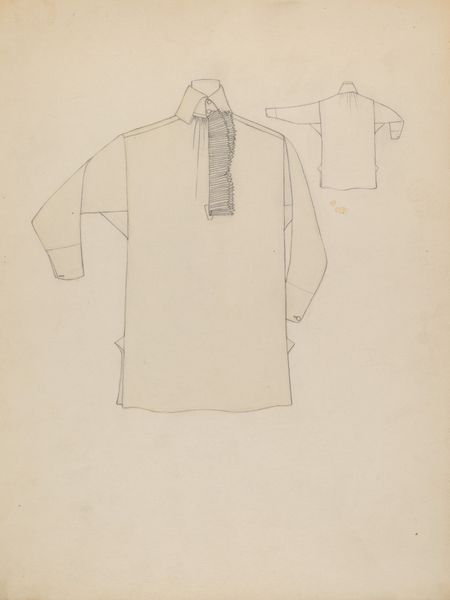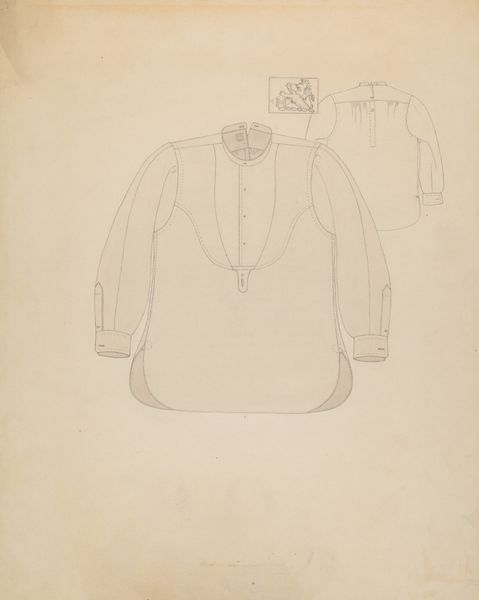
drawing, paper, pencil
#
drawing
#
charcoal drawing
#
paper
#
pencil drawing
#
pencil
Dimensions: overall: 29.3 x 22.7 cm (11 9/16 x 8 15/16 in.)
Copyright: National Gallery of Art: CC0 1.0
Editor: We're looking at "Waistcoat," a drawing from around 1938 by Grace Halpin. It’s done in pencil and charcoal on paper. It has an interesting formality but also a starkness. What is your take on it? Curator: Note how the waistcoat, precisely rendered, floats against the blank ground. Consider the artist's meticulous rendering of the patterned fabric versus the stark emptiness of the surrounding space. What is achieved by focusing so intently on surface texture and repeating form? Editor: Well, the detail in the pattern is impressive. It almost seems to be both abstract and real at the same time. Does the fact that this is a drawing of clothing, and not, say, a portrait, affect how we should view the piece? Curator: Precisely! The representation transforms an object of everyday use into a subject worthy of contemplation. It challenges us to view the commonplace with newfound attentiveness, doesn't it? Furthermore, the composition avoids clear visual cues about function, leaving us to focus on form alone. Editor: That's a really interesting way to think about it. I was initially puzzled by the choice of subject. I see now it’s less about *what* is depicted, and more about *how* it's depicted. Curator: Exactly. The success here lies in how Halpin uses simple mediums—pencil and charcoal—to elevate a functional object to an exercise in pure form. Look at how subtle shading defines the lapel. Editor: The way you’ve pointed out the interplay between subject, form and medium gives me a lot to think about. Curator: Indeed. Reflect on how this concentrated attention to form transforms our perception, inviting a reevaluation of objects we might otherwise overlook.
Comments
No comments
Be the first to comment and join the conversation on the ultimate creative platform.
